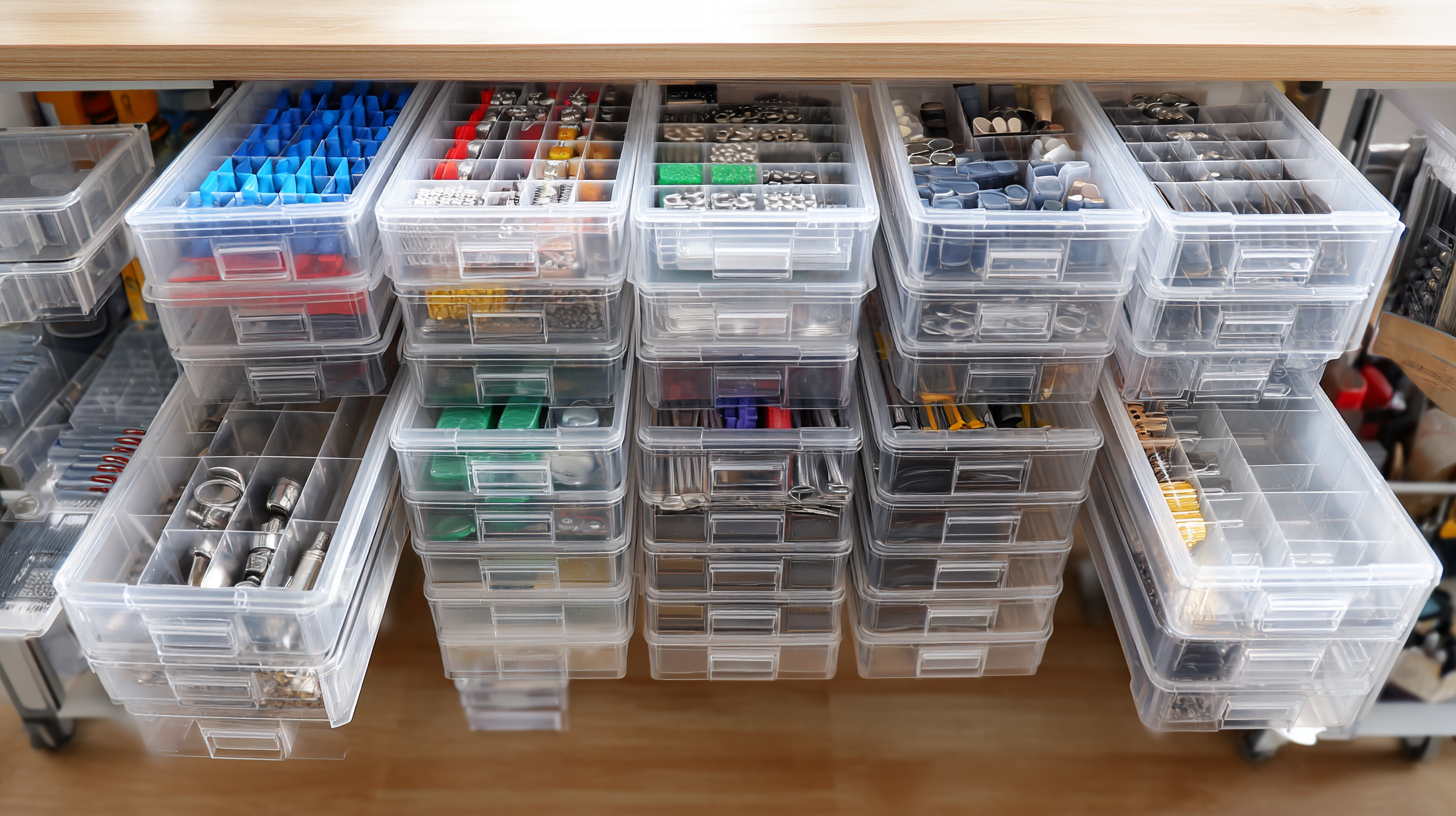How to Maximize After-Sales Support While Reducing Repair Costs for the Best Storage Trays
In today’s highly competitive market, ensuring exceptional after-sales support while effectively managing repair costs is crucial, especially when it comes to products like storage trays. As consumer expectations continue to rise, businesses must innovate not only in the design and manufacturing of these essential organizational products but also in the services they provide post-purchase. This blog will explore strategies to maximize after-sales support, emphasizing the importance of swift and efficient customer service and the use of quality materials that minimize repair needs. Moreover, we will delve into market analysis projections for the storage tray industry by 2025, identifying key trends and challenges that could impact both sales and support strategies. By aligning product quality with top-tier after-sales services, companies can not only enhance customer satisfaction but also significantly reduce repair costs, ensuring a prosperous future in the dynamic landscape of storage solutions.

Best Practices for After-Sales Support in Storage Tray Products
Providing exceptional after-sales support for storage tray products is essential for maintaining customer satisfaction while simultaneously reducing repair costs. According to a report by the Customer Service Institute, 70% of customers are willing to pay more for greater convenience in after-sales services. This emphasizes the importance of a streamlined support process that addresses customer needs efficiently.
One best practice is implementing a robust training program for customer service representatives. Well-trained staff can resolve issues 70% faster, according to the American Society for Quality. Encouraging direct communication between customers and support teams fosters transparency and helps identify common issues early on, ultimately reducing repair costs.
**Tip:** Regularly solicit feedback from customers through surveys or follow-up calls. This not only builds rapport but also provides valuable insights into potential product improvements.
Additionally, offering comprehensive online resources such as troubleshooting guides and instructional videos can empower customers, reducing the number of support inquiries. A study from the Aberdeen Group revealed that companies with effective self-service options improve customer satisfaction by 50%.
**Tip:** Ensure these resources are easily accessible and kept current to enhance user experience and reduce the likelihood of product returns.
How to Maximize After-Sales Support While Reducing Repair Costs for the Best Storage Trays - Best Practices for After-Sales Support in Storage Tray Products
| Dimension | Value |
|---|---|
| Average Repair Cost | $15.00 |
| Support Request Response Time | 2 hours |
| Customer Satisfaction Rate | 85% |
| Warranty Period Offered | 12 months |
| Replacement Rate | 5% |
| Annual Maintenance Cost | $200.00 |
| Average Time for Repairs | 3 days |
| Feedback Implementation Rate | 60% |
Cost-Effective Strategies for Repairing Storage Trays
When it comes to repairing storage trays, implementing cost-effective strategies can significantly reduce repair costs without compromising on quality. One of the first steps is to conduct regular maintenance checks to identify wear and tear early. By catching issues before they escalate, you can often perform simple repairs or replacements that are far less expensive than waiting for a complete breakdown. Furthermore, keeping an inventory of common replacement parts allows for quick fixes during scheduled maintenance, ultimately saving both time and money.

Another effective strategy is to train your team in basic repair techniques. Empowering staff with the skills to fix minor issues can lead to substantial savings, as you won’t need to rely on external services for every problem. Additionally, establishing a feedback loop with users of the storage trays can provide valuable insights into the most common issues, enabling you to focus your efforts on repairs that will have the greatest impact on prolonging the life of the trays. By integrating these strategies, businesses can enjoy enhanced after-sales support and minimize repair costs effectively.
Real-Life Case Studies: Successful Applications of Storage Trays
In exploring the successful applications of storage trays, we can look at several real-life case studies showcasing their effectiveness in maximizing after-sales support and reducing repair costs. One notable example comes from an automotive parts retailer that implemented custom storage trays in their warehouse. By categorizing and properly storing small parts, they reduced the time spent searching for items, leading to faster resolutions for customer inquiries. This streamlined approach not only improved after-sales engagement but also minimized the risk of damages during handling, thereby lowering repair costs.
Another case study involves a tech company that adopted storage trays for managing returned products. By using trays specifically designed to organize returned electronics, the company was able to swiftly assess the condition of items and categorize them for refurbishment or recycling. This efficient workflow not only enhanced customer satisfaction through quicker turnaround times but also significantly cut repair costs associated with mismanaged returns. As these examples illustrate, the right storage trays can play a pivotal role in enhancing service efficiency while controlling expenses.
What Are the Types of Storage Trays and Their Specific Benefits?
When it comes to storage solutions, choosing the right type of storage tray can significantly enhance efficiency and functionality. There are several types of storage trays, each with specific benefits tailored to meet diverse organizational needs. For instance, stackable storage trays are perfect for maximizing vertical space. They allow users to organize items neatly without clutter, making them ideal for small workshops or offices. Their design not only promotes easy access but also enables convenient storage of tools, documents, or craft supplies.
Another popular choice is the compartmentalized storage tray, which is designed with dividers to segregate various items. This type of tray is especially useful for hobbyists and professionals alike who require quick access to small parts or materials. By preventing items from mixing, compartmentalized trays enhance efficiency and streamline workflows. Moreover, they minimize the time spent searching for a specific component, ensuring that projects remain on track. Choosing the right storage tray can lead to improved organization, ultimately supporting better after-sales service by reducing repair costs through decreasing damage and losses.
Maximizing After-Sales Support and Reducing Repair Costs for Storage Trays
This chart illustrates the average repair costs associated with various types of storage trays. Understanding these costs can help in maximizing after-sales support while effectively managing repair expenses.
Innovative Solutions to Enhance Longevity and Reduce Repair Needs
In the manufacturing sector, the growing demand for automation and operational efficiency is driving the widespread adoption of the Internet of Things (IoT). Companies are increasingly leveraging IoT technologies to enhance their after-sales support mechanisms while effectively minimizing repair costs for products like storage trays. By integrating smart sensors and connectivity into manufacturing processes, businesses can monitor product performance in real time, detect potential issues before they escalate, and plan maintenance schedules more efficiently.
Innovative solutions are paving the way for improved product longevity and reduced repair needs. For instance, predictive maintenance driven by IoT analytics allows manufacturers to foresee when a product may require servicing, thereby extending its lifespan. The implementation of automated quality control systems can also significantly reduce human error, ensuring the production of more durable storage trays. As industries continue to embrace these technologies, the mutual benefits of enhanced customer support and lowered repair expenditures become critical components of a competitive strategy in the modern marketplace.

